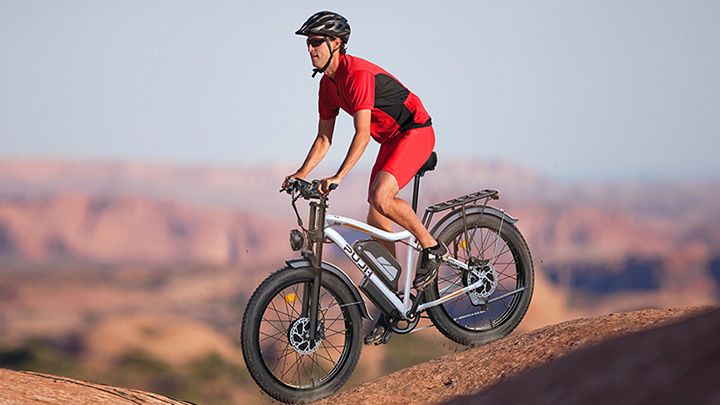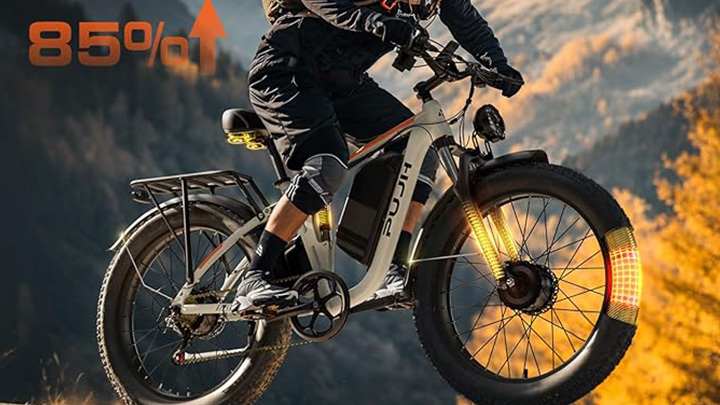How to Choose the Right Electric Bicycle
Electric bicycles (e-bikes) have revolutionized personal transportation, offering an eco-friendly, efficient, and enjoyable way to travel. With so many models and features available, selecting the perfect e-bike can feel overwhelming. This guide will walk you through the key factors to consider when choosing an electric bicycle that suits your needs.
1. Identify Your Purpose
Understanding how and where you plan to use the e-bike is the first step in narrowing down your options.
- Commuting: If you need an e-bike for daily commuting, look for a lightweight model with a long-range battery, integrated lights, and fenders for rainy weather.
- Leisure: For recreational use, prioritize comfort, wide tires, and a suspension system for smooth rides.
- Mountain Biking: Choose an e-bike with powerful motors, high torque, and advanced suspension for rugged terrains.
- Cargo or Delivery: Opt for a cargo e-bike with a sturdy frame and high weight capacity to carry heavy loads.
2. Understand E-Bike Types
E-bikes come in several categories, each designed for specific purposes:
- City E-Bikes: Ideal for urban environments, these bikes offer smooth handling, often with step-through frames for easy mounting.
- Folding E-Bikes: Perfect for commuters with limited storage or those combining cycling with public transport.
- Mountain E-Bikes: Equipped with durable frames and powerful motors for off-road adventures.
- Road E-Bikes: Lightweight and efficient, designed for speed and long distances on paved roads.
- Fat Tire E-Bikes: Offer excellent stability and traction for riding on sand, snow, or gravel.
3. Consider the Motor
The motor is the heart of any e-bike, and its type and power significantly affect performance:
- Hub Motors: Found in the front or rear wheel, these are common for city and leisure bikes. They are low-maintenance but may not handle steep inclines well.
- Mid-Drive Motors: Positioned near the bike’s crankset, these motors offer better weight distribution and perform well on hills, making them ideal for off-road and mountain e-bikes.
- Motor Power: Measured in watts, motor power ranges from 250W (suitable for flat terrain) to 750W or more (better for hilly areas or heavy riders).
4. Battery Range and Placement
Battery capacity determines how far you can ride on a single charge.
- Battery Range: Consider your typical ride length. A battery with 300–500 watt-hours (Wh) is sufficient for most commutes, while longer rides may require 700 Wh or more.
- Removable vs. Integrated: Removable batteries allow easy charging indoors, while integrated batteries offer a sleek design and may have better water resistance.
- Charging Time: Check the charging time, especially if you need quick turnarounds between rides.
5. Frame and Size
The frame material and size impact the bike’s weight, durability, and comfort:
- Material: Aluminum is lightweight and affordable, while carbon fiber offers premium lightness and strength. Steel frames are sturdy but heavier.
- Fit: Ensure the bike fits your height and riding posture. Most brands provide sizing charts to guide you.
6. Gearing and Brakes
- Gearing: Multi-speed e-bikes are versatile for various terrains, while single-speed models are low-maintenance and suitable for flat cities.
- Brakes: Hydraulic disc brakes offer better stopping power and are essential for high-speed or downhill rides. Mechanical disc brakes are a budget-friendly alternative.
7. Suspension
Suspension systems enhance comfort and control:
- No Suspension: Ideal for smooth city roads.
- Front Suspension: Suitable for light off-road and urban commutes.
- Full Suspension: Best for mountain biking and rough terrains.
8. Weight Capacity
Check the maximum weight capacity of the e-bike, especially if you plan to carry cargo or are on the heavier side. Cargo e-bikes often support over 300 pounds, while standard models handle around 220–250 pounds.
9. Accessories and Features
Look for additional features that enhance functionality and convenience:
- Lights: Integrated front and rear lights for safety.
- Fenders and Racks: Useful for commuting and carrying gear.
- Display Panel: Provides information such as speed, battery level, and distance traveled.
- Smart Features: Some e-bikes include GPS tracking and app connectivity.
10. Budget and Warranty
E-bikes come in a wide price range, from budget-friendly models under $1,000 to premium bikes costing over $5,000. Determine your budget and prioritize the features that matter most to you. Also, check the warranty for the motor, battery, and other components.
11. Test Ride and Reviews
Before making a purchase, test ride different models to evaluate comfort, handling, and motor power. Additionally, read online reviews to learn about the experiences of other users.
Conclusion
Choosing the right electric bicycle requires careful consideration of your needs, terrain, and budget. By focusing on the type of bike, motor, battery range, and additional features, you can find an e-bike that perfectly complements your lifestyle. Investing in a high-quality e-bike not only provides convenience and enjoyment but also supports a greener, more sustainable future.




